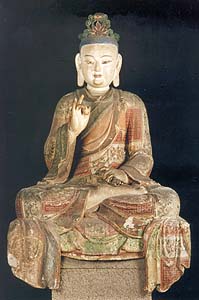
As a part of their 500 year celebrations, the Vatican on June 21st reopened its Ethnological Missionary Museum after an extensive, five-year renovation project. The museum is organized into four main sections, devoted to Asia, Oceania, Africa, and America, with smaller subdivisions within each sector featuring displays devoted to specific countries and their religious practices.
The Asia section is the only one currently open to the public, where some 100, 000 artifacts from China, Japan, Korea, Tibet and Mongolia are on display, including painted Japanese silk scrolls dating back to 1667, a special section on Korean Shamanism, and beautifully carved Chinese religious sculptures. Many of these artifacts were given to the Pope as gifts from all corners of the world on the occasion of the 1925 Jubilee.
The aim of the museum is to recognize and celebrate the multiplicity of cultures which take part in the Christian faith. “It is a sad fact that indigenous people weren’t treated respectfully but too often treated as inferiors by Europeans,” the curator, Monsigneur Roberto Zagnoli says. “The Vatican has an important role in promoting a message of respect and tolerance for different cultures and religions. We want to highlight the richness in diversity and also that the role of the missionary is one of dialogue and not of conquest or proselytism.”
The Asia Oceania section is scheduled to be completed by the end of 2007, the African section by 2009 and the section on the Americas by 2010.
Ethnological Missionary Museum, Viale Vaticano, tel. (39) 06 69883333. Open Monday through Friday, 8:45 a.m. to 5 p.m (last admittance at 3:20 p.m.) and Saturday 8.45 a.m. to 3:20 p.m (last admittance at 1:20 p.m.). The museum is open free of charge on the last Sunday of the month, 8.45 a.m. to 2 p.m.(last admittance at 12:20 p.m.). — Cailin Birch

